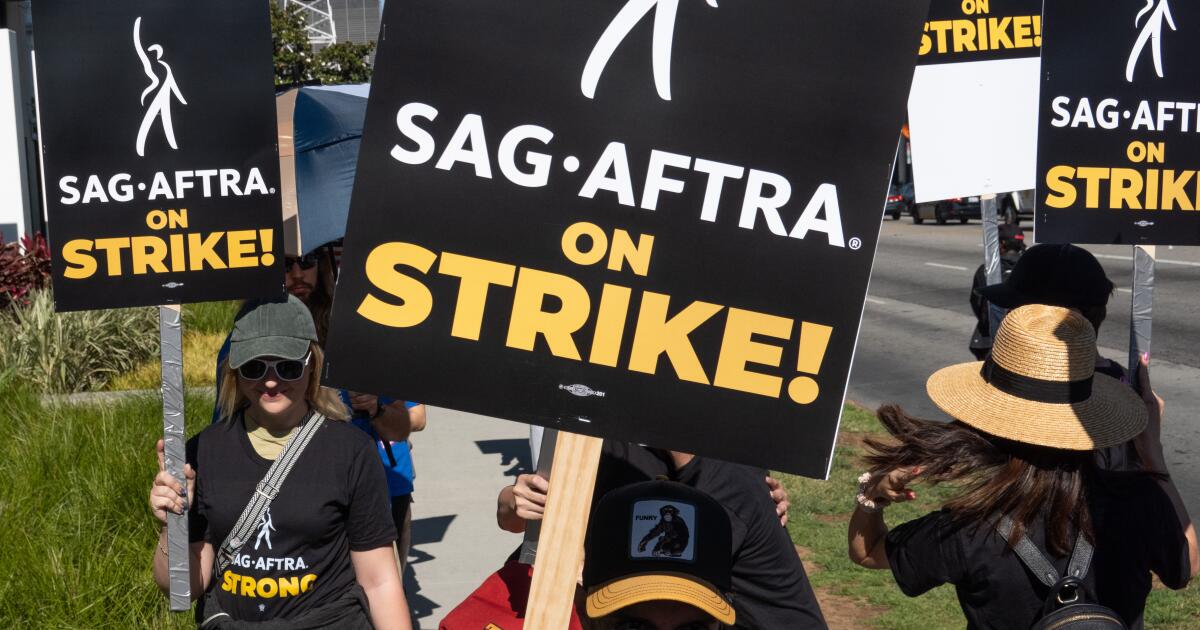Hollywood breathed a collective sigh of relief Sunday night when the Writers Guild of America and the major studios announced a tentative deal for a new contract.
The nearly five-month strike — among the longest in the union’s history — secured what the guild described as significant wins for writers, but also had a devastating effect on the livelihoods of thousands of cast and crew who’ve been out of work for months.
“We can say, with great pride, that this deal is exceptional — with meaningful gains and protections for writers in every sector of the membership,” WGA’s negotiating committee wrote in a memo to members on Sunday night. The union did not release deal points, but the proposed contract is said to include bonuses tied to the success of high-budget subscription streaming programs and address the guild’s deep concerns around artificial intelligence, among other topics.
But optimism and elation surrounding the agreement, which came after 146 days of picketing, has also been tempered with a sobering recognition that Hollywood’s return to work won’t be immediate or easy.
The Sunday pact is but one of several pieces in a complicated puzzle that must be completed before writers, actors and crew members can get back on the job, even once the strike officially ends and the WGA contract is ratified by the union’s 11,500 film and TV writers.
The union’s negotiating committee is expected to recommend that the union’s board approve the contract as early as Tuesday, before it is sent to members for a vote. WGA members will be able to return to work before the ratification vote, but they must first wait for the guild’s authorization.
Indeed, it may be weeks or even months before production activity returns to anywhere close to the levels that existed before the work stoppage began on May 2. Late-night shows and talk shows are expected to be the first to go back to production.
“It’s one of those things that doesn’t happen just overnight,” said Todd Holmes, associate professor of entertainment media management at Cal State Northridge. “There’s gonna be a ramp-up time to get the writers back to work and to get productions moving again.”
Chief among the remaining hurdles: studios must now find a way to settle their differences with SAG-AFTRA, whose members have been on strike since mid-July.
The WGA deal could provide a template for the actors guild, which has raised similar concerns about artificial intelligence and compensation for successful streaming shows.
But it may not be a quick negotiation. While demands by SAG-AFTRA and the WGA are broadly similar, there are differences. AI, for example, could prove to be an even thornier issue for actors than for writers, because the technology to digitally reproduce a person’s voice and likeness already exists and is advancing rapidly in ways that present immediate threats to performers’ jobs.
SAG-AFTRA said on Sunday it looked forward to reviewing the WGA and Alliance of Motion Picture and Television Producers’ agreement and remains “committed to achieving the necessary terms for our members.”
“We remain on strike in our TV/Theatrical contract and continue to urge the studio and streamer CEOs and the AMPTP to return to the table and make the fair deal that our members deserve and demand,” SAG-AFTRA said.
Some writers, for their part, have pledged to join their actor counterparts on picket lines, as a show of gratitude to SAG-AFTRA members who supported the WGA through its long negotiation process. The actors union and the AMPTP have not held formal meetings since the actors’ strike began.
“The entire business model has been changed by streaming, digital, AI,” said SAG-AFTRA President Fran Drescher in a speech in July. “This is a moment of history that is a moment of truth. If we don’t stand tall right now, we are all going to be in trouble. We are all going to be in jeopardy of being replaced by machines.”
AMPTP said in a statement in July that it had agreed to establish a “comprehensive set of provisions” that addressed those concerns. But, signaling possible tensions ahead, SAG-AFTRA has said the studios’ proposals don’t go far enough.
Holmes estimates that productions would restart and Hollywood crew members could return to work in November, assuming the actors and studios resume negotiations soon.
On top of resolving the actors’ dispute, there are also logistical issues to consider when returning to production. Those challenges include the scheduling and availability of soundstages and staffing up the backlog of productions that were paused or canceled, similar to when the industry tried to come back from the COVID-19 pandemic.
“It will take a couple months to get closer to full-force production,” said Scott Purdy, U.S. national media industry leader for audit, tax and advisory services firm KPMG. “Think of it like the auto industry — they go on strike and there’s six months’ worth of vehicles that aren’t produced. You can’t all of a sudden produce all six months’ worth of vehicles in three weeks.”
The dual Hollywood strikes are estimated to have an economic impact in California of about $5 billion, Holmes said. Thousands of workers, including Hollywood crew members, have been out of work due to production shutdowns and small businesses including prop houses and talent representation firms have also suffered.
The long duration of the strikes has hurt Hollywood workers, some of whom have struggled to make ends meet and have left the state in order to survive. While Holmes thinks most workers will return when productions restart, he said, “unfortunately, there will be some people that will not be coming back to the industry.”
Staff writer Meg James contributed to this report.




